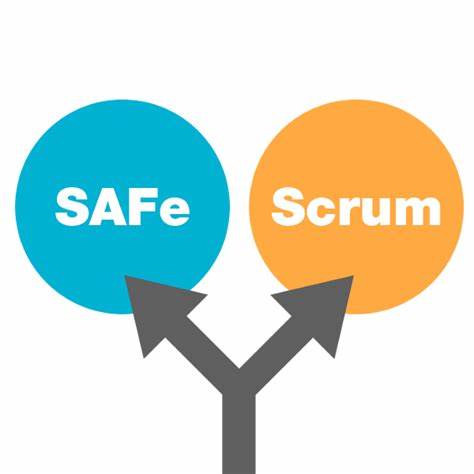The main difference between Scrum and SAFe is that Scrum is a framework for managing work on small projects while SAFe is a framework for managing work on large projects. Both frameworks are Agile frameworks that aim to help teams deliver work more efficiently.
1. What Is the Difference Between Scrum and Safe?
There are many software development frameworks out there. But which one is the best for your project? Scrum and SAFe are two of the most popular frameworks. But what’s the difference between them?
Scrum is a lightweight framework that is often used in agile software development. SAFe is a more comprehensive framework that includes scrum, but also adds additional practices and artifacts.
The main difference between Scrum and SAFe is that Scrum is only concerned with the software development process, while SAFe also includes aspects of product development and delivery. SAFe is also a more complex framework than Scrum, and can be more difficult to implement.
Here’s a more detailed look at the difference between Scrum and SAFe:
Scrum
Scrum is a framework for agile software development. It is focused on the software development process, and includes a set of practices and artifacts that help teams to be more agile.
The main practices of Scrum are:
1. Sprints: Sprints are short, time-boxed periods of development, typically lasting 2-4 weeks. At the start of a sprint, the team decides what work will be completed during that time.
2. Stand-ups: Stand-ups are short, daily meetings where team members update each other on their progress.
3. backlog: The backlog is a list of all the work that needs to be done. It is prioritized by the product owner.
4. product owner: The product owner is responsible for defining the product vision and priorities.
5. Scrum master: The scrum master is responsible for facilitating the scrum process and ensuring that the team is following the scrum framework.
SAFe
SAFe is a framework for agile software and product development. It includes all of the practices of scrum, but also adds additional practices and artifacts that help teams to be more agile.
2. How Scrum and Safe Differ in Their Implementation?
When it comes to project management frameworks, there are a lot of different options to choose from. Scrum and SAFe are two of the most popular frameworks, but they have some key differences. In this blog, we’ll take a closer look at how Scrum and SAFe differ in their implementation.
Scrum is a agile framework that is typically used for software development projects. It is focused on delivering working software quickly and efficiently. The Scrum team is self-organized and self-managed, and they use short sprints to get work done.
SAFe is a framework that is based on Scrum, but it is designed for larger projects. SAFe is typically used for enterprise-level projects. It includes additional practices and artifacts that are not found in Scrum, such as the release train and the program backlog.
One of the biggest differences between Scrum and SAFe is the size of the team. A Scrum team is typically small, with about 7-9 members. A SAFe team is much larger, with up to 50 members. This difference is due to the fact that SAFe is designed for large projects.
Another difference between Scrum and SAFe is the length of the sprints. In Scrum, sprints are typically 2-4 weeks long. In SAFe, sprints are 8-12 weeks long. This difference is due to the fact that SAFe is designed for larger projects that require more time to complete.
3. What Are the Main Differences Between Scrum and Safe?
If you’re wondering what is the difference between Scrum and SAFe, you’re not alone. Both are popular frameworks for Agile software development, and both have their pros and cons. In this article, we’ll compare Scrum vs SAFe, and help you decide which framework is right for your team.
Scrum is a lightweight framework that is designed to be simple and easy to understand. SAFe is a more comprehensive framework that includes additional processes and artifacts.
One of the main differences between Scrum and SAFe is the scope of the framework. Scrum is typically used for small-scale projects, while SAFe is designed for enterprise-level development.
SAFe also includes additional processes, such as release planning and iteration planning. These processes can help teams to better coordinate their work and avoid scope creep.
Another difference between Scrum and SAFe is the way they handle change requests. In Scrum, change requests are typically handled through the product backlog. This means that changes can be made at any time, without disrupting the sprint. In SAFe, change requests are handled through a separate process called the Program Increment (PI) Planning. This can help to better manage and track changes, but it can also add complexity to the process.
Finally, Scrum teams are typically self-organizing, while SAFe teams are typically more hierarchical. This means that Scrum teams have more freedom to decide how they want to work, while SAFe teams may have more structure and oversight.
Conclusion
There is a lot of overlap between the Scrum and SAFe frameworks, but there are some key differences as well. SAFe is more comprehensive, and is designed for organizations that need to scale their agile implementations. Scrum is more lightweight, and is better suited for smaller teams.
